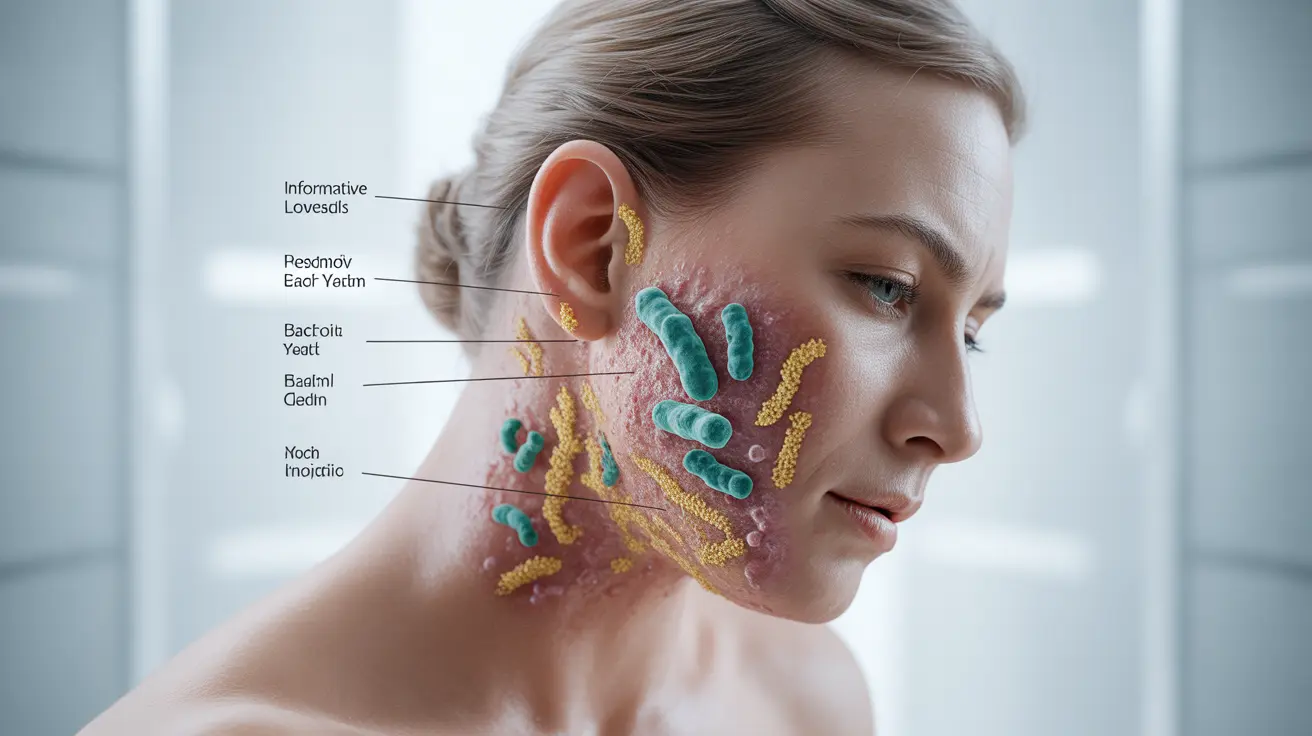Many people experience an unpleasant odor behind their ears at some point, often described as musty, cheesy, or sour. This common issue can be embarrassing and concerning, but understanding the underlying causes can help you address the smell behind ears effectively and prevent it from recurring.
The area behind the ears creates an ideal environment for bacterial and fungal growth due to its warm, moist conditions and limited air circulation. Various factors, from poor hygiene to underlying medical conditions, can contribute to persistent odors in this delicate area. Recognizing the signs and implementing proper care strategies is essential for maintaining good ear hygiene and overall health.
Common Causes of Odor Behind the Ears
The smell behind ears typically results from several interconnected factors that create favorable conditions for microorganism growth. Dead skin cells naturally shed from the scalp and behind the ears, mixing with oils, sweat, and environmental debris to form a substance that bacteria and yeast can easily feed upon.
Sebaceous glands in this area produce natural oils that, when combined with dead skin cells, create an ideal breeding ground for bacteria. Poor ventilation behind the ears means moisture can accumulate, especially in individuals who wear glasses, hearing aids, or tight-fitting headwear regularly.
Certain medical conditions can also contribute to persistent odors. Seborrheic dermatitis, a common skin condition that causes flaky, oily patches, frequently affects the area behind the ears. Eczema and psoriasis can also create environments where bacteria thrive, leading to noticeable smells.
Identifying Different Types of Ear Odors
Bacterial Infections
Bacterial overgrowth behind the ears often produces a distinct sour or vinegar-like smell. This occurs when naturally occurring bacteria on the skin multiply excessively, breaking down oils and dead skin cells into compounds that emit strong odors. The smell may become more pronounced after sweating or when the area remains unwashed for extended periods.
Fungal and Yeast Infections
Fungal infections, particularly those caused by yeast, typically produce a sweet, cheese-like odor behind the ears. Candida, a type of yeast naturally present on the skin, can multiply rapidly in warm, moist environments. This overgrowth creates a distinctive smell that many people compare to aged cheese or bread.
Fungal infections may also cause visible symptoms such as redness, flaking skin, or small bumps in the affected area. The skin might feel itchy or irritated, and the odor often persists despite regular washing with standard soap and water.
Treatment Approaches for Ear Odor
Basic Hygiene Measures
Addressing poor hygiene is often the first step in eliminating odors behind the ears. Gentle daily cleaning with mild, fragrance-free soap helps remove accumulated oils, dead skin cells, and bacteria. Use a soft washcloth to clean behind the ears, being careful not to scrub too vigorously, which could irritate the delicate skin.
After washing, thoroughly dry the area with a clean towel. Moisture left behind can perpetuate the problem by creating an environment where bacteria and fungi continue to thrive. For individuals who wear glasses or hearing aids, cleaning these devices regularly and ensuring they fit properly can prevent moisture buildup.
Antifungal and Antibacterial Treatments
When basic hygiene measures aren't sufficient, topical antifungal or antibacterial treatments may be necessary. Over-the-counter antifungal creams containing ingredients like clotrimazole or miconazole can effectively treat yeast infections behind the ears. Apply these products according to package directions, usually once or twice daily for several days to weeks.
For bacterial infections, antibacterial washes or creams may help restore the natural balance of skin microorganisms. Products containing benzoyl peroxide or chlorhexidine can be particularly effective, though they should be used carefully to avoid irritation.
Managing Underlying Skin Conditions
If seborrheic dermatitis or other skin conditions contribute to the odor, specialized shampoos and topical treatments may be necessary. Medicated shampoos containing ketoconazole, selenium sulfide, or pyrithione zinc can help control fungal overgrowth and reduce associated odors.
For persistent or severe cases, prescription medications may be required. Topical corticosteroids can reduce inflammation, while stronger antifungal medications can address resistant fungal infections.
Prevention Strategies
Preventing odors behind the ears requires consistent hygiene practices and attention to factors that promote bacterial and fungal growth. Incorporate cleaning behind the ears into your daily routine, using gentle circular motions with a washcloth and mild soap.
Keep the area dry by thoroughly patting it with a clean towel after showering or swimming. If you're prone to excessive sweating, consider using an antiperspirant specifically designed for sensitive skin areas, though be cautious not to apply it directly to broken or irritated skin.
Regularly clean items that come into contact with the area behind your ears, such as pillowcases, glasses, hearing aids, and headphones. These items can harbor bacteria and reintroduce them to the cleaned area.
When Professional Help Is Needed
While many cases of ear odor respond well to improved hygiene and over-the-counter treatments, certain situations warrant medical attention. Persistent odors that don't improve after two weeks of consistent treatment may indicate an underlying condition requiring professional evaluation.
Seek medical care if the odor is accompanied by symptoms such as severe itching, pain, discharge, swelling, or fever. These signs could indicate a more serious infection or skin condition that needs prescription treatment.
Additionally, if you have diabetes, a compromised immune system, or other chronic health conditions, it's advisable to consult a healthcare provider for any persistent skin issues, as these conditions can complicate treatment and healing.
Frequently Asked Questions
What causes a smell behind the ears and how can I get rid of it?
The smell behind ears is typically caused by a combination of dead skin cells, natural oils, sweat, and bacterial or fungal overgrowth in the warm, moist environment. To eliminate the odor, practice daily gentle cleaning with mild soap, thoroughly dry the area, and consider using antifungal or antibacterial treatments if basic hygiene doesn't resolve the issue. Consistent care and addressing any underlying skin conditions are key to long-term success.
Is a cheese-like smell behind the ears a sign of infection?
Yes, a cheese-like smell behind the ears often indicates a yeast or fungal infection, particularly candida overgrowth. This distinctive sweet, cheesy odor occurs when yeast feeds on dead skin cells and oils in the warm, moist environment behind the ears. The smell may be accompanied by redness, flaking, or itching, and typically requires antifungal treatment to resolve completely.
How do I treat a yeast or fungal infection behind the ears?
Treat yeast or fungal infections behind the ears by applying over-the-counter antifungal creams containing clotrimazole, miconazole, or terbinafine according to package directions. Keep the area clean and dry, and continue treatment for the full recommended duration even after symptoms improve. If the infection doesn't respond to over-the-counter treatments within two weeks, consult a healthcare provider for prescription-strength medications.
Can poor hygiene lead to a bad smell behind the ears?
Yes, poor hygiene is one of the most common causes of bad smell behind the ears. When dead skin cells, oils, sweat, and environmental debris accumulate without regular cleaning, they create an ideal environment for bacterial and fungal growth, leading to unpleasant odors. Establishing a daily cleaning routine with mild soap and thorough drying typically resolves odor issues caused by inadequate hygiene.
When should I see a doctor for a persistent smell behind my ears?
See a doctor if the smell persists after two weeks of consistent proper hygiene and over-the-counter treatments, or if it's accompanied by severe symptoms like pain, discharge, swelling, or fever. Also seek medical attention if you have diabetes or a compromised immune system, as these conditions can complicate skin infections. A healthcare provider can identify underlying conditions and prescribe stronger treatments if necessary.




